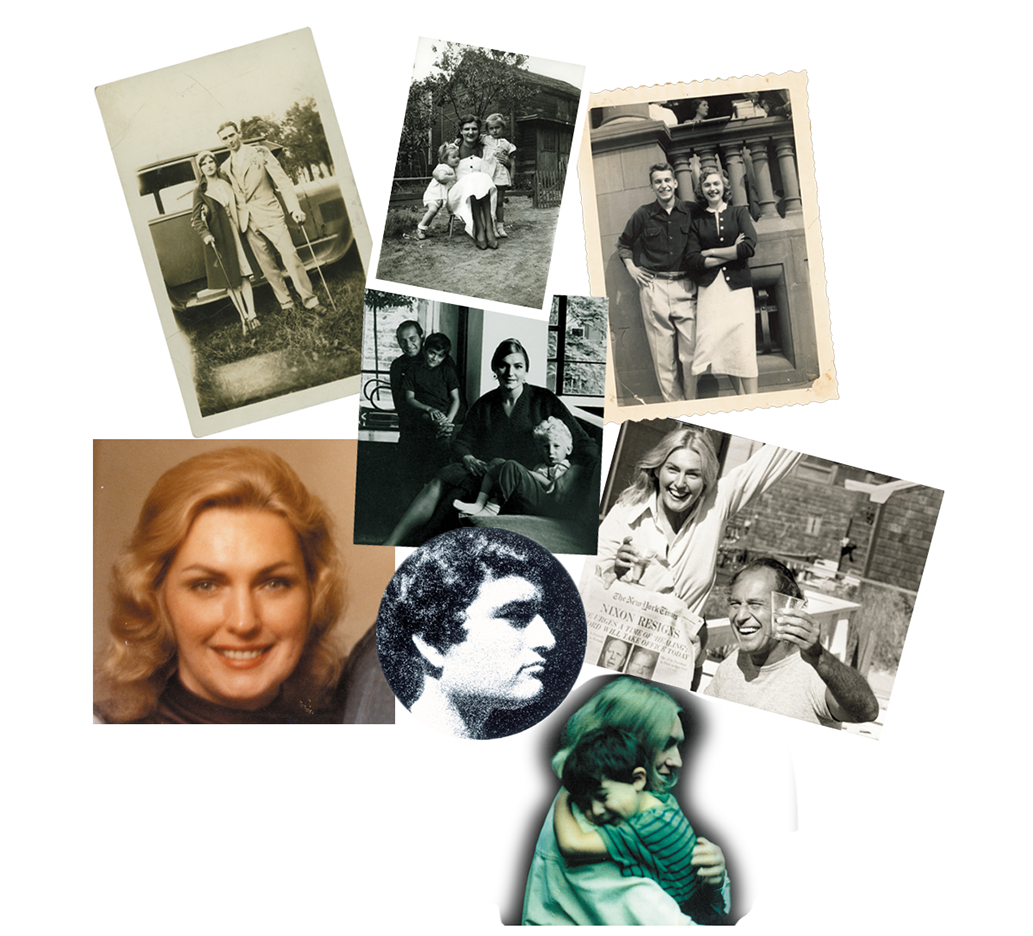LEWANDOWSKI-LOIS

Joseph Lewandowski met Laura Godlewski in a spark plug factory. He was a foreman and she did piecework. He courted her by doing an hour's work for her every morning so she wouldn't be fired for being late. (She walked twelve miles from the family farm.) They eloped and on June 6, 1930 their first daughter, Rosemary, was born. She grew up during the depression in Syracuse, N.Y. with her parents and sister, Joan. Her grandfather and eight uncles worked in the steel mills of that industrial city when the farm became unprofitable. Her paternal grandfather worked in a hot dog factory (his hair became red from exposure to the food coloring). During World War II the Godlewskis sold the farm to the government, now the site of the Syracuse airport today.
With the inspiration of her mother, Rosemary drew beautifully before she could write and her talent was praised throughout the Polish West Side of Syracuse. When she was 11 years old she told her father she wanted to save to go to New York City to become an artist. Joe's pals told him it would be a waste of money to send a daughter to college because she would marry and the tuition would be “wasted.” Nevertheless, he made a pact with Rosemary, sold his war bonds and opened a grocery store to earn money for her education. His ambitious daughter worked every summer to earn and save money. At 5 a.m. she would go to “the shape-up” for farm workers. Youngsters would line up and farmers would pick the strongest looking to harvest their crops that day. Rosemary was 5' 8 1/2" tall when she was 13 (she grew another inch the next year) and she was always picked. But it wasn't long before she tired of the gruelling job of picking strawberries on her knees in the hot sun, and then fighting with the farmers who tried to cheat her on the weight of her fruit at the end of the day. She decided, “There must be an easier was to make a living,” and thereafter became a salesgirl, and eventually a secretary. A New York firm moved to Syracuse, paying big city salaries and she got a job there. She worked for two salesmen. Every morning she took dictation from each of them and every afternoon typed 40 letters about venetian blinds. She felt like a machine. She quit, and then worked at Syracuse University for The Dean of Women. She made less money but was offered a scholarship to The School of Fine Arts, but decided that she could not afford to study to be a "fine artist.” She had to use her talent to earn a living for herself!
In 1948 she graduated from Syracuse Central High School. Many of her friends went off to college, but she was still short on funds. She worked as a secretary at a General Electric office for a year and in 1949 she enrolled in Pratt Institute in Brooklyn to study Advertising Design. On the first day of school she met her classmate, George Lois. He followed her home to her dormitory. Two years later they eloped his immigrant Greek parents wanted him to marry a Greek). Six months later George, went to Korea.
Rosemary Lois worked as an advertising designer for Reba Sochis Advertising, then as Art Director for Fairchild Publications, and as Promotion Art Director for Mademoiselle magazine. In 1953 George returned from the Korean War and became a pioneering art director. In 1960 he formed Papert Koenig Lois, the first advertising agency with an art director as one of its principals. In 1958, Rosemary left advertising to be a full-time mother to Harry Joseph Lois, George and Rosemary’s first son. As Harry Joe slept, Rosemary followed her passion and began to paint in oil on canvas. Her first “machine painting” was of a typewriter she “fell in love with” because the paper under the celluloid on the keys was a different color, depending on how often the human fingers had touched the keys. The idea that the use of the machine by a human had actually visually changed the machine “blew her mind,” and began her fascination with the relationship between man and machine. Her lament? “We were a more progressive nation when we manufactured things–when hard-working men and women were respected, and their unions had real power.” Amen.
In 1962, George and Rosemary’s second child, Luke, was born. Rosemary vowed to stop painting until he was two years old. But at eighteen months she tried to hold him in her lap while she painted a self-portrait with Luke in her lap (the result was a“mirror-image” with her as a left-handed artist).
In 1967, Rosemary’s first one-woman show, “Lewandowski-Lois Paints Machines,” opened at the D'Arcy Gallery on Madison Avenue. Twelve “machine paintings” seemingly appeared out of nowhere, received with critical acclaim. (John Canaday, of The New York Times, wrote that Mrs. Lois made it seem that Léger emasculated machinery by changing it.)
Lewandowski-Lois lives in Greenwich Village with her husband. Her son, Luke, a professional photographer and whiz computer graphic designer, works with his father on advertising and book projects. Lewandowski-Lois is the proud grandmother of George and Alexander, Luke and Diane Lois’ two sons.
Tragically, in 1978, George and Rosemary’s beloved son Harry, died two weeks after his 20th birthday.